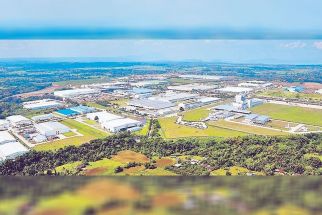Too many choices?

Dam or weir? Japanese or Chinese? ODA or PPP? Too many choices are apparently causing our decision makers to hesitate all these years. The result: a water crisis.
We have been talking about Laiban Dam, Kaliwa-Kanan Rivers back in the early ’80s. The folks responsible for Metro Manila’s water weren’t in a hurry to make decisions at that time because Angat was still sufficient.
Interest in doing the projects goes up during long hot summers when we worry about the water level at Angat. Then we forget we even have a water problem after the rains come.
Officials of a Japanese company, GUDC, suddenly showed up in Manila this week and told us they want to revive a proposal to build a weir at the Kaliwa River. They said they made this proposal in 2008, followed it up during the P-Noy watch, but our officials practically ignored them.
What is a weir? It is a low dam built across a river to raise the level of water upstream or regulate its flow. It will not store water the way a large dam will. In a weir the water overflows the weir, but in a dam the water overflows through a spillway.
The Japanese proponents claim their studies show a weir is all we need to produce 550 MLD of raw water. But the Chinese dam is designed to increase output from the initial 600 to 2,400 MLD.
The Japanese company claims they did their study of the watershed and they are ready to guarantee the constant flow of water even through the hottest summers without a major dam.
The Japanese also say that their weir will not flood the communities in the area the way the Chinese dam will. That may make it easier for them to get environmental clearance and community approval.
The Japanese company also said they are fully funding their project compared to the Chinese funding of only 85 percent of project cost.
The Japanese claims their project will cost $410 million compared to the Chinese that will cost $800 million. They can complete the project in 36 months compared to the 54 months for the Chinese project.
But it is impossible to really compare the two projects because it is like comparing apples and oranges. It depends on what we want, or on our assessment of what we need over what time frame.
If we want a fast, short to medium term solution, the Japanese proposal is it. If we want to take care of the long term, the Chinese dam makes more sense.
It is also not that simple to compare financing costs. Japanese ODA at 0.1 percent is in yen payable over 40 years with a 12-year grace period. The Japanese company claims they are working with JICA, but at the same time say it will be private financing and did not mention costs.
Chinese ODA at two percent (not three percent) is in US dollars payable over 20 years with a seven-year grace period. DOF claims that the two terms are really pretty close to each other if we switch profile to the same currency and duration… Also to be considered is currency risk…
The impact of the projects on the communities in the area is a top concern. The Chinese project will flood homes in some barangays, reason enough for local officials and residents to oppose building the dam. This was why the project went nowhere for decades.
So, should we have a weir or a dam? An official of one of the companies involved in one of our water concessions thinks a weir in the Kaliwa area is better. The weir provides the base load and the treatment plants in the Laguna de Bay are the “peaking” plants… no need for a reservoir because Laguna Lake will be the free reservoir.
In other words, the Japanese proponent is saying, why get an expensive sledgehammer when an ordinary hammer is all we need.
Because it is simpler, they can complete the project faster and provide water resources to Metro Manila sooner. They also claim it will not cause any burden on government because it is 100 percent private financed and MWSS only needs to pay agreed water rates over 25 years.
On the other hand, our planners look at the Kaliwa-Laiban-Kanan as one system. The Chinese will build Kaliwa Dam now and the others will be developed as needed in the future.
But the Japanese proponent followed up their proposal too late. Our government has already awarded the project to a Chinese company and the ODA financing agreed upon. Order to proceed may be given by April. Might be too late to backtrack.
If the government can handle the environmental and community problems of the Chinese dam quickly so that construction is not delayed, that may be the way to go. But history gives us low probability this will happen. DENR says no application for environmental clearance has yet been filed and this takes time under the best circumstances.
In the end, the only considerations ought to be what can be done fastest at least cost and justified by scientific considerations.
There is also the option of fully tapping Laguna de Bay. The concessionaires are already doing this, but in a limited way. There are cost considerations.
The cost of treating Angat water is P0.45 per cubic meter versus Laguna water of P5.00 to P6.50. Maybe wider use of solar energy and a cleaner lake can bring cost down.
Maybe putting the National Water Resources Council directly under Malacañang will help make sense of government’s water policies… but only if the lawyers and politicians in decision making functions listen to the engineers, hydrologists and other scientists whose opinions matter more than theirs.
Until then, we will just hop from crisis to crisis and it gets tiring.
Boo Chanco’s e-mail address is [email protected]. Follow him on Twitter @boochanco
- Latest
- Trending




























